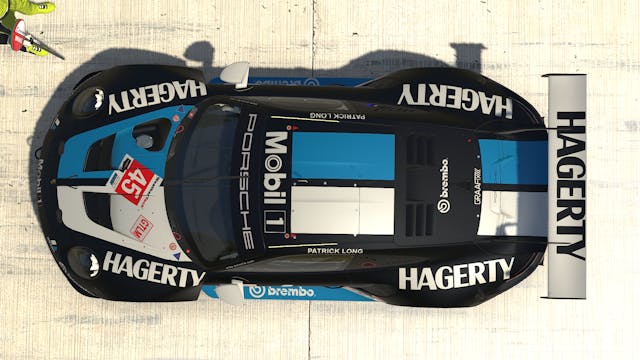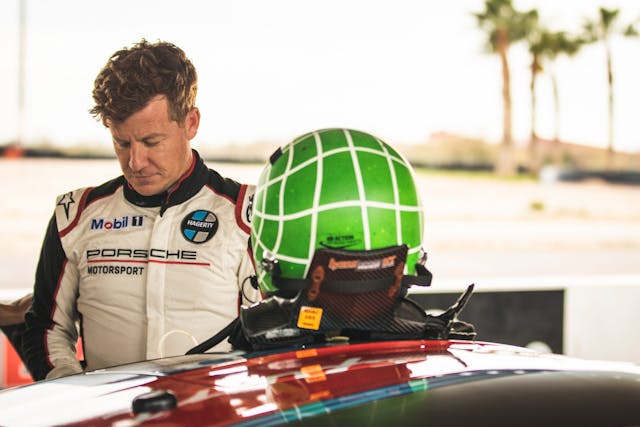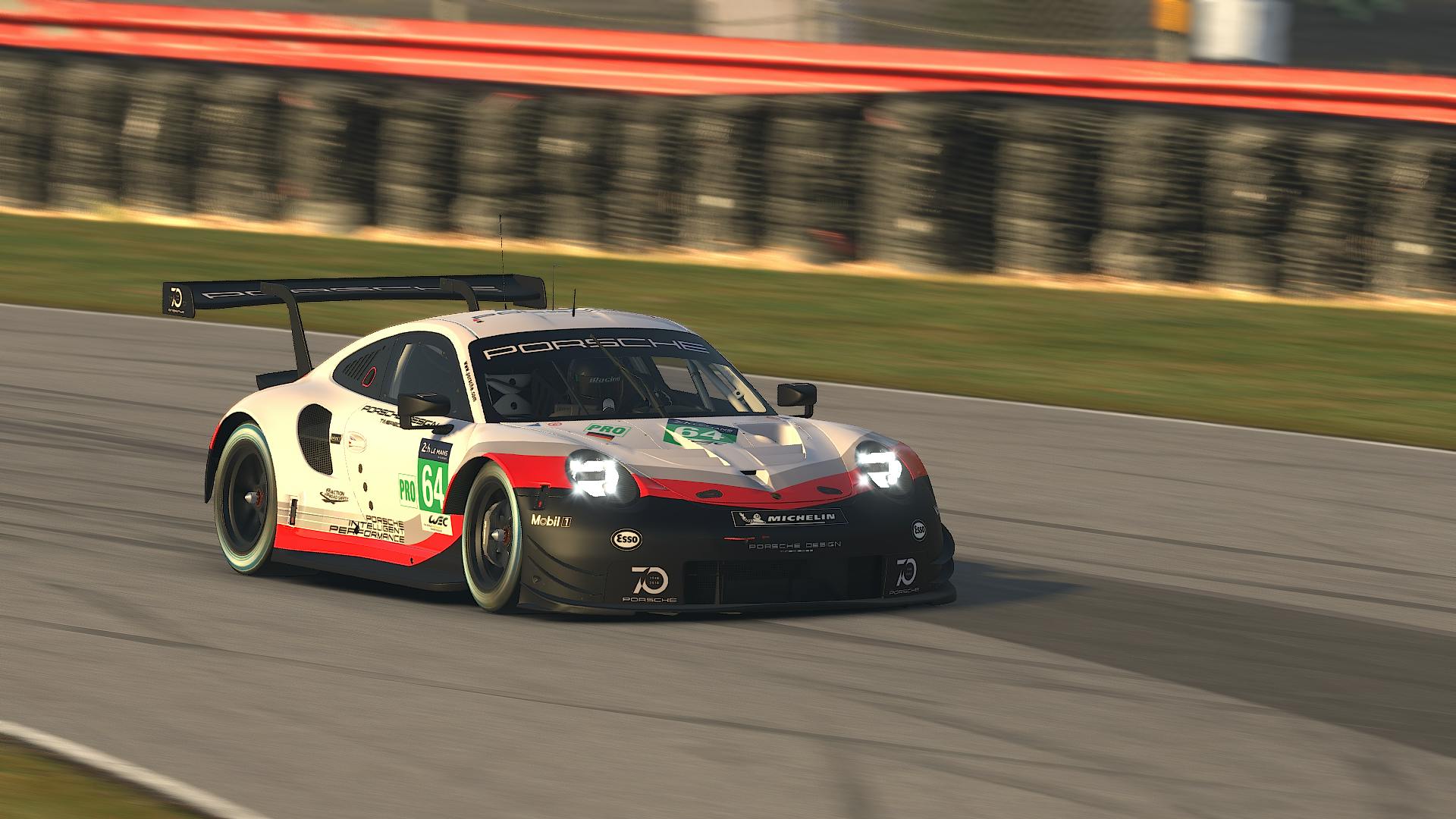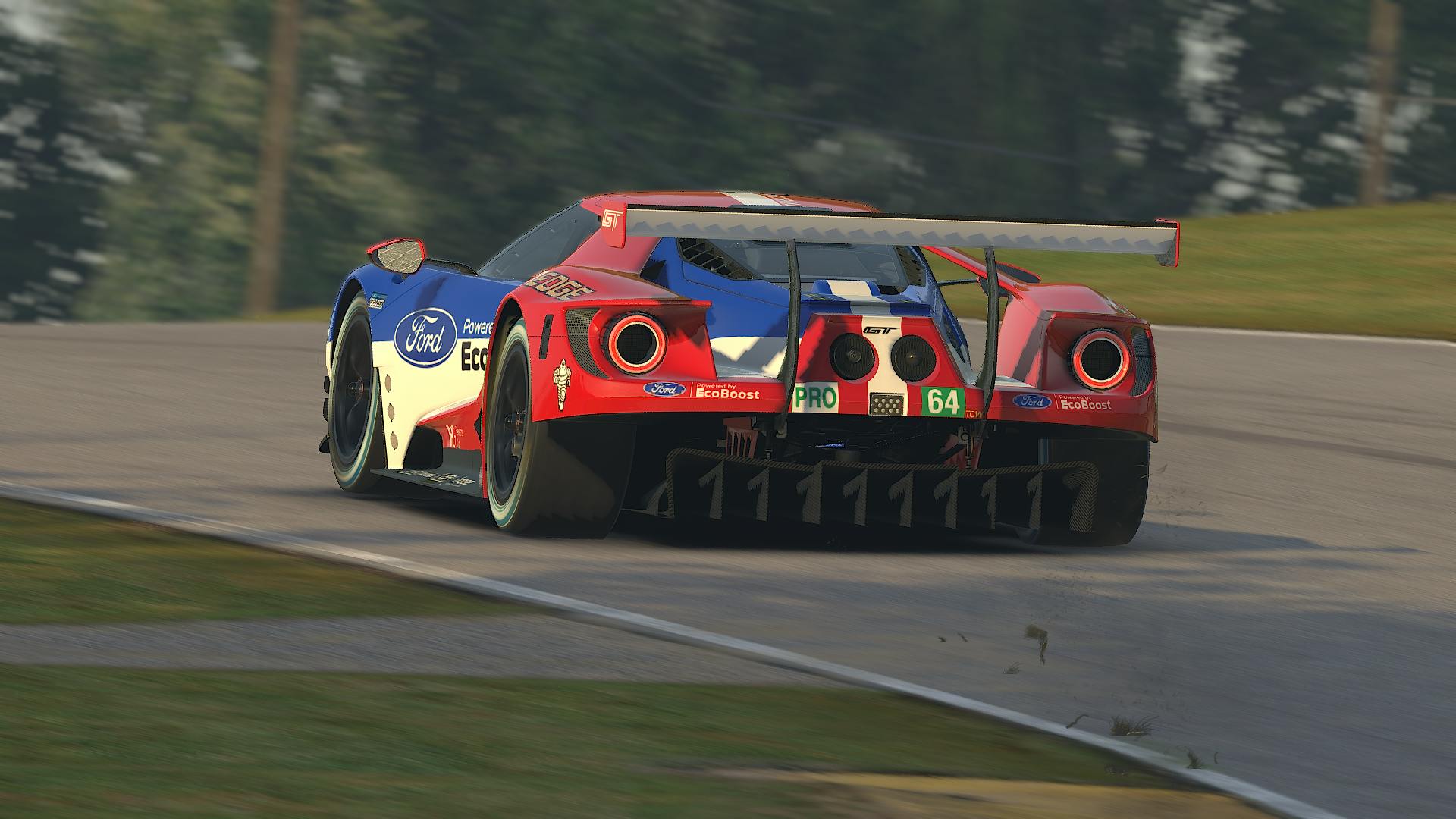Media | Articles
Porsche driver Patrick Long: iRacing might be virtual, but the benefits are real
Hagerty is sponsoring the IMSA iRacing Pro Series race on April 30, and, ahead of the event, we sat down with Porsche factory racer Patrick Long to talk shop about racing in the virtual world. Since real-life racing has been postponed until further notice, the California native has taken to racing online. In the upcoming race at virtual Mid-Ohio, Long will pilot the Hagerty-sponsored No. 45 Wright Motorsports Porsche RSR, which is similar to the car he drives for Wright Motorsports on the (real-life) IMSA circuit.
The upcoming race can be viewed on iRacing’s YouTube, Facebook, and Twitch channels.
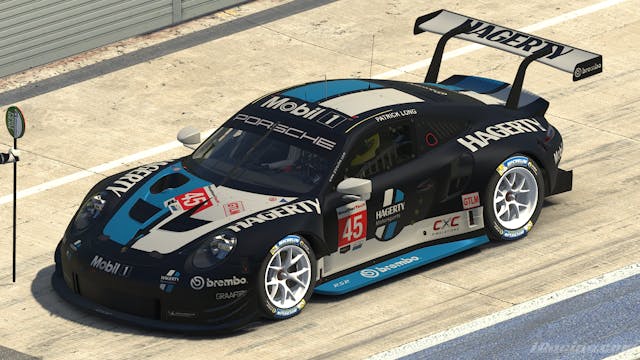
Hagerty: Prior to the IMSA iRacing Pro Series event at WeatherTech Raceway Laguna Seca, what was your experience with iRacing?
Patrick Long: I used it mainly as a tool for preparation and some off-season mental exercise. I find the level of simulation and competition in iRacing to be unparalleled. It’s such a big community, and it’s very serious racing, so, in the off season, it gives me an additional competitive outlet. I’ve also used it as a tool for learning new tracks.
I use it to coach clients remotely. I have linked up with clients online and completed track walk-style tours around different circuits. We drive around in separate cars, and I instruct over the mic, noting different aspects of the track.
Prior to the race at Laguna, I hadn’t been active on iRacing for a few years. During that time, racing online has definitely evolved. The performance of the drivers has increased. I think of it like a professional tennis player in a game of ping-pong. Some of the skills relate, but not everything. For example, the mental skills are parallel, real-racing to iRacing, but something like g-forces and that g-meter in your butt don’t apply as much. You end up having to rely heavily on visuals and acoustics.
Marketplace
Buy and sell classics with confidence
H: Makes sense. Tell us about your simulation rig set-up for these pro races.
PL: I’m on a full-motion simulator by CXC Simulations. I just ordered a new rig for home use, but for now I use their sim center in Los Angeles. Their simulators use actuators and it will actually move in place, based on the terrain. It keeps my body from getting too rusty during this downtime. Your whole body is tensed up during the race, and at the end of a 90-minute session, you’re physically and mentally fatigued. Last week I was really feeling it after a private race with my Wright Motorsports teammates.
H: What are the best parts about racing virtually?
PL: It allows competitors from all over the world to easily be in one place. Since the cost, or barrier of entry, is a lot lower than most racing, we’ve discovered some new talent. There are some eSports drivers out there who have an innate ability to extract speed and maintain focus. Those racers might not have had the means to drive an actual car, and their talents would otherwise go undiscovered.
Let’s not forget about the fans. It also gives fans a chance to watch their hero drivers to compete during this down time.
I also love being able to sample different disciplines and tracks that I’ve never driven. Last week I was in a NASCAR stock car, drafting at 200 miles per hour with Kevin Harvick and Bobby Labonte. Those are awesome moments when I get to be teleported into another person’s world.
H: What are the challenges of racing virtually?
PL: There are two. First, I’m spoiled because I’ve had some of the best engineers and software at my disposal in real-life racing. In iRacing, I’m my own crew and I have to set up my own car based off the feedback that I’m feeling.
Second, extracting that last five percent is tough. You just don’t rely on the same senses and practical procedures. You have to unlock new files on how you extract speed in iRacing. It’s grounding and humbling to have less iRacing experience than some of the other drivers on the track. I’ll be giving a lot more room to people on track who might not have as much experience as me, when we go back racing.
H: Okay, so the last IMSA race was April 16 at Laguna Seca, a track where you’ve turned numerous laps and experienced a lot of success. Are there any big differences between virtual and real Laguna Seca?
PL: Not a lot. The tracks are scanned so the reference points are there. Depth perception can be tough on a computer screen. That changes things a little bit, but the actual elevation, the curbs, the signage are correct. When you’re under a safety car and hearing the race director in your ear, your mind is convinced you’re at Laguna Seca.
H: The next IMSA iRacing Pro Series race is at Mid-Ohio on April 30. What do you anticipate being unique to that race?
PL: Just like Laguna, the digital track is very accurate. The elevation and the rises and crowns in the road certainly exist in the game. In some ways, they’re a little more extreme in how the car reacts, so precision will be critical. There will be a huge field of cars, so I expect a lot of attrition and contact. I hope I am wrong.
H: To anyone looking to get into online racing, what advice would you give them?
PL: Read and research. Find what the best equipment is for you based on your budget. Then, be prepared to put in the time. If you stick with it, you’ll start to experience a great linear growth curve, and you’ll find great people to race with and different types of cars and tracks to experience.
H: Out of iRacing’s vehicle roster, what is your favorite car to race?
PL: Well there’s the politically correct answer, the Porsche RSR. It’s one of my offices in real-life so it’s great to jump in and get laps in the car. I’m actually able to communicate with Porsche engineers over in Germany. There’s a full test team with drivers at Porsche Digital, and it’s great to see how seriously they’re taking eSports.
Aside from the RSR, I love the off-road and short track stuff. Throwing the car into the corner, getting sideways, and fighting for traction. Just last week I was racing at digital Volusia County Speedway in a dirt modified, rubbing wheels with Juan Pablo Montoya and Will Power. That was a ton of fun.
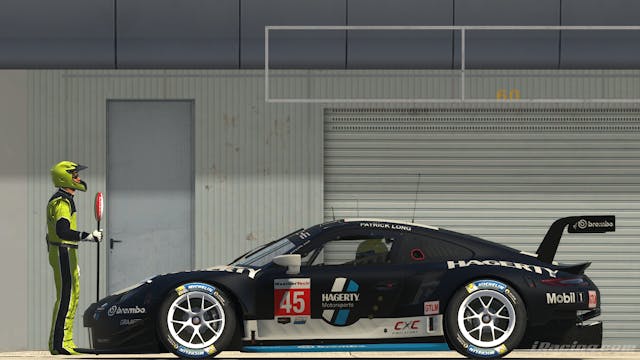
H: There are rumors that iRacing may be adding the old North Wilkesboro Speedway to its list of available tracks. If it was to render more vintage tracks, which circuit would you want them to upload into the game?
PL: Oh, tons of them. The original Spa. The old-school Hockenheimring would be so cool. Let’s keep it domestic and go with the original Elkhart Lake street circuit.
H: I know you love vintage racing. What vintage race car would you like to see in iRacing?
PL: I would love to see the Porsche 908/03 in the game. It’d be so much fun to rip around in that short-wheel base, open-top spyder, with the engine right in your ear.
H: Outside of racing virtually, what are you doing to stay busy during this down time?
PL: Well, Luftgekühlt always absorbs any bit of free time I have. There are never enough hours in the day for that. I’ll officially announce it here, first, we’re publishing a new Luftgekühlt coffee-table book. The book puts its arms around our fourth, fifth, and sixth shows. I love being involved and working alongside our team. It’s been awesome to self-publish and understand what it takes, from working with the designers to the printers and developing everything from the marketing plan to the distribution. Luftgekühlt has been my bachelor’s degree in business.
Oh, and we’re building another LuftAuto rally car, but that’s another story.
